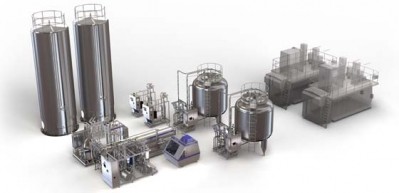UK dairy sector eyes energy saving pasteurisation alternative to extend milk shelf-life
Dairy UK, in collaboration with the Carbon Trust, recently held workshops to discuss alternatives to the energy consuming thermal process used for milk pasteurisation. Dairy UK environment manager Fergus McReynolds told DairyReporter.com that the most viable substitute could be UV pasteurisation.
This alternative subjects milk to precise frequencies of wave lengths of light to interact with DNA and stop its ability to reproduce. The advantages and drawbacks of the new technology have been seen by this publication ahead of the IEEA’s report.
Why Ultraviolet?
Though exact efficiency savings of UV technology will be detailed in the report, it is anticipated that the UV alternative will consume less energy than the existing heat technique.
UV technology has been used in other industries for photo purification of wine, sugar syrups and fruit juices and also as a final sterilization process in large scale water treatment facilities.
It has also been used for milk pasteurisation in South Africa on a limited scale allowed by local authorities and was trialled in the US where it was found to increase milk shelf-life by 30 per cent, according to Dairy UK.
It is believed that the process would involve minimal plant modification as existing pipework can remain relatively unchanged and the only consumable needed is electricity. Large scale equipment has already been manufactured for other industries and incorporated into factories.
The technique is also considered fairly well researched and the effects on microbial levels within milk are believed to be understood and have been compared with thermal techniques.
It has been suggested that UV technology could be used simultaneously with thermal pasteurisation to increase shelf-life without amending legislation. McReyolds said this could allow dairies to incorporate UV equipment gradually.
Limitations
The Dairy UK environmental spokesperson warned further trials were needed as there are no commercial demonstrations of UV milk processing to date. He added that, since current UK food safety regulations only permits pasteurisation by thermal means, it could be some time before the technique is used as the sole process for destroying pathogens in raw milk. It may even require EU approval, he said.
The required dosage needed in order to pass through entire opaque liquid is also uncertain and it has been suggested that a control system to cater for changing the exposure with specific grades will be required.
There would undoubtedly be cost implications in existing systems, but it is at this stage unclear whether potential energy savings could outweigh removal costs. The report will give an indication of the cost of removing obsolete machinery.
Other alternatives
Microwave and pulsed electric field pasteurisation will also be explored in the IEEA’s report. While industrial microwaves are used throughout the industry, it is believed that unless the carbon associated with electricity could be reduced, the process would use more energy than the current system.
Pulsed electric field technology is a cold sterilisation process where bacteria and spores are destroyed by polarizing and stretching them to destruction or through their electrical breakdown. The product has been commercially available for the pasteurisation of fruit juices, but McReynolds said the process could be very costly to implement.





